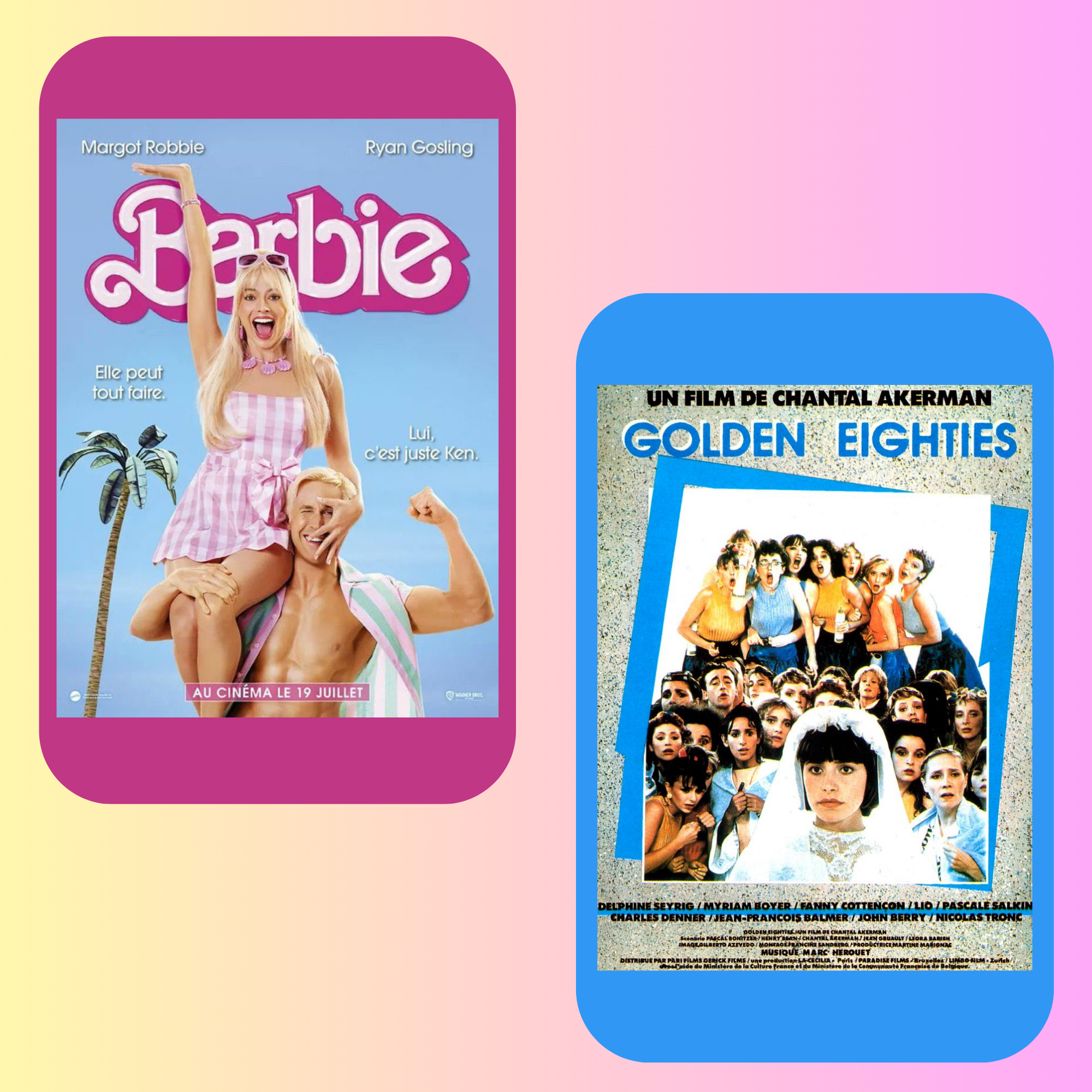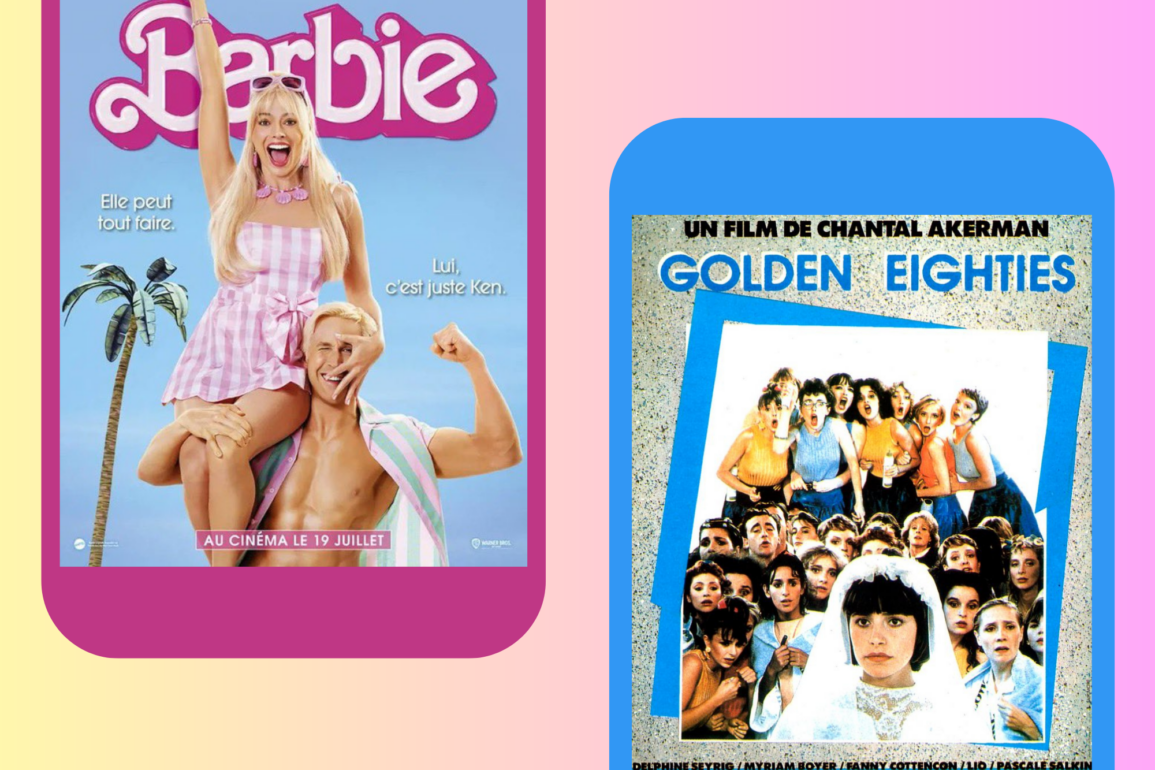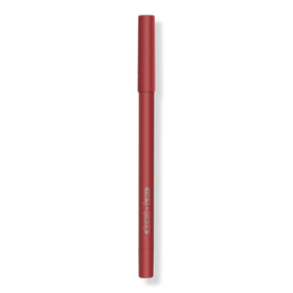
CULTURAL OBJECTS—like Barbie the doll, like Barbie the film—do not themselves need to express feelings, evidence of interiority, or any political perspective to elicit these responses from audiences and critics. Barbies have always caused anxiety and served as objects for projection by mothers, daughters, and everyone else. Some worry about the effects that Barbie’s impossible physical attributes might have on the self-esteem of their daughters, and they reject Barbie’s over-the-top femininity.
My mother, a home economics teacher in our local South Dakota high school, encouraged my love of Barbie and longing to be Barbie by sewing clothes on her Singer sewing machine for both me and Barbie. I combed through displays of Butterick and Simplicity patterns and chose the best ones. The pencil-drawn cover models donning chic outfits fed my dreams of the popularity that would surely soon arrive, but when I tried on the finished products, my hopes were always dashed. This disappointment was mitigated (a little) by the fact that Mom’s handiwork always suited Barbie perfectly: a swing-skirted striped dress, bright orange bell-bottomed pants, crop top, and boldly purple faux fur coat all slipped effortlessly onto Barbie’s lovely figure. I saved these precious ensembles for my daughter’s Barbies, but her Barbies turned out to be what Greta Gerwig’s 2023 film calls “weird,” damaged when “played with too hard.” My daughter’s Barbies became moldy from long sessions in the bath, clothes always wet, haircuts always crazy. But they led much more adventurous lives than my own childhood versions. They traveled to imaginary lands, fought off Nazis, and returned home triumphant. My son played with Barbies too. The Barbies lived in the bathtub and in the basement, ready to be girlfriends for the “guys” (never Ken, but Batman, Spider-Man, and other plastic Marvel and DC heroes).
Just as Barbie the doll, accompanied by her fabulous DreamHouse, inspires multiple fantasies and feelings, the gorgeous artificiality of Gerwig’s film has similarly elicited strong feelings from fans and detractors. Some feminist critics love it for its biting humor, while others lament its lack of substance, its compromised messages, and its corporate packaging. Right-wing figures decry its “wokeness,” and Barbie dolls have been burned in protest, incidentally and accidentally creating “Weird Barbies.” Barbie as an idea, a collection of feelings, cannot be destroyed, only made into something weirder. The New Yorker’s Anthony Lane is dismissive of Barbie’s affects and effects, calling the film “a plug for a chunk of plastic,” and complaining that “[w]atching the first half hour of this movie is like being waterboarded with Pepto-Bismol.” And yet, millions of women viewers have embraced and rocked this Pepto-Bismol vibe, showing up at cineplexes wearing Barbie pink, calling themselves and their friends “Barbie,” and shouting their fandom on social media.
Barbie is highly stylized and couldn’t be more artificial. The threat that Barbie—and Barbie—poses to the patriarchy, its presentation of a new (promising or disappointing) feminist future, is administered in the key of camp, and perhaps it is the inside joke of it all that makes men’s rights activists (and men’s rights lite) so furious. But while feelings in response to Barbie are running hot, in Gerwig’s Barbie’s Barbieland there are no feelings at all … at first. Barbieland is a vision of bright colors, clichéd gestures, and surface emotions. Barbieland’s mythic origins are loudly announced in the first frame with reference to Stanley Kubrick’s 2001: A Space Odyssey (1968). Swimsuit Barbie (a portrayal of the doll’s 1959 debut version) appears from the sky to land within a group of glum little girls who are mechanically ironing clothing, doing the dishes, and playing at being “mommy” with their baby dolls. Encountering glorious Swimsuit Barbie (Margot Robbie flashes her enchanting smile, lowers her sunglasses, and winks) causes the girls to violently hurl their baby dolls against the rocks. Why play at being a mother when you can stand still and run with Barbie? Helen Mirren’s triumphant voice-over announces the Good News: “Barbie changed everything. […] Because Barbie can be anything, women can be anything.”
This (tongue-in-cheek, too-confident) dispatch sets viewers up for the neoliberal fantasy of progress that explodes in the next scenes as Barbieland. Girl power, inclusion, diversity, and happiness are on display, but as hollowed-out pageantry: it’s enjoyable, and witty, but also empty, all spectacle. Dazzling panorama song-and-dance numbers feature Barbies and Kens of all ethnicities, races, body shapes, sizes, and abilities, but no aging characters and some explicit unease with the only pregnant character, Midge (Emerald Fennell), whom we learn was “discontinued” by Mattel shortly after her launch. Even Ken’s “buddy” Allan (Michael Cera) is included in the fun. Allan is unique in having no multiples and emitting a queer vibe in a world that we later come to understand lacks all sexual desire. Allan gravitates towards the Barbies rather than the Kens, and by the end of the film, he has traded his striped shirt for all pink.
In an interview about cinematic influences on Barbie, Gerwig leans into the “chunk of plastic” insult, lovingly calling its aesthetic an “authentic artificiality.” She cites Jacques Demy’s 1964 musical Umbrellas of Cherbourg’s intense color palette, but might just as well have called our attention to feminist auteur Chantal Akerman’s 1986 Window Shopping (released outside the United States as Golden Eighties). Akerman’s 1970s films mostly complied with film critic and director Laura Mulvey’s 1975 insight that breaking the male gaze in film requires feminist filmmakers to produce avant-garde work that remaps and even destroys visual and narrative pleasure. Akerman’s static camera, long takes, and durational gaze mandating that viewers “feel time passing” are the opposite of entertaining and distracting, instead forcing viewers to sit with uncomfortable feelings. But Window Shopping is different. Akerman, a Barbie who always refused a box (Akerman did not like the labels “feminist” or “queer” as descriptors of her films, even though they were often both), uses Window Shopping to experiment and reinvent the musical in a highly formalized vein. Akerman’s typical focus on framing and everyday gesture remains, but it is awash in the colors and visual pleasure exuded by Technicolor MGM musicals of the 1940s and ’50s.
Window Shopping tracks overlapping love triangles and the frustrations of bad timing and unrequited love in a Brussels shopping mall. It moves between four self-contained bright and uniform little worlds of appearance and representation—dress shop, beauty salon, cinema, and snack bar (a place not only to hang out, but also to be seen). In its opening scene, we see no bodies or faces, just high-heeled shoes hurrying to and fro, clickety-clack. Just like in Gerwig’s Barbie, Akerman’s look-alike, exchangeable characters are free of ambiguity and depth as they burst into song and dance. Presented as generic, even “stereotypical,” with sanitized feelings, viewers come to discover that the main character, Jeanne (Delphine Seyrig) is a survivor of Nazi concentration camps and is haunted by worries about safety and economic security. She does not want to do anything that might change her settled world, including experiencing any real emotion.
There are complex feelings just under the surface of Barbieland’s visual extravaganza as well. To her (and our) surprise, Barbie brings a Barbieland “blowout party with […] planned choreography” to a silent and shocked halt when, mid-number, hands poised to clap, she pauses to say: “Do you guys ever think about dying?” The next day, Barbie is further assaulted and disoriented by bad breath, spoiled milk, burnt toast, and the inability to float.
These events also call to mind the most famous of Akerman’s avant-garde classics, the 1975 Jeanne Dielman, 23 quai du Commerce, 1080 Bruxelles, which topped Sight and Sound’s “Greatest Films of All Time” ranking this past year. Disturbing feelings (or a lack thereof) haunt this story of a housewife/middle-class prostitute, even though her face gives nothing away. (Jeanne is played by Delphine Seyrig—same character name, same actress as Window Shopping, but 11 years earlier.) The Holocaust sits in the background here as well, its lingering trauma evidenced by Jeanne’s desire for control and rigidity. As three days unfold, small but obvious, sometimes bodily, changes in Jeanne’s routine and appearance, otherwise dictated by her meticulous and rigid patterns, begin to unravel her orderly, if numb, existence. She boils the potatoes for too long, misses a button when buttoning her housecoat, and sits anxious and despondent in a chair when she finishes her housework duties earlier than usual. At the film’s end, with no trigger, anticipation, or explanation, she mechanically stabs one of her Johns with her sewing scissors. We might say that she is both more fortunate than Barbie (at least she has an orgasm before the stabbing) and less (not having any other Jeannes to talk to).
Barbie can share her feelings with other Barbies, and they together surmise that her thoughts of death are linked to other horrifying bodily transformations. Her feet are flat! She is developing cellulite! Barbie is told by her Barbie comrades that she must consult Weird Barbie (Kate McKinnon, with smeared makeup, short hair, and legs often splayed in the splits), from whom Barbie learns that the only way to soothe her discomforting feelings and restore her body to normal is to travel to the “Real World” and find the girl whose sadness has permeated the membrane between the two worlds. Feeling has been introduced and must be eradicated! In 1975, the anxiety of Akerman’s Jeanne led to murder; in 1986, the Jeanne of Window Shopping rejects passion to remain safely with her merchant husband in the mall; in 2023, Gerwig will take Barbie somewhere else. But we remember the violence of the little girls smashing the heads of their baby dolls against the rocks in Barbie’s opening, and we may wonder or worry what feeling can do.
More distressing feelings arise for both Barbie and Ken (Ryan Gosling) as they come into contact with patriarchy in the real world. Barbie finds her girl, Sasha (Ariana Greenblatt), but instead of greeting Barbie with gratitude and hugs as the doll had expected, Sasha tells her that Barbies make girls feel bad about themselves and calls her a “professional bimbo” and a “fascist!” Barbie feels further shock and disappointment upon discovering that Mattel, the “mothership,” does not necessarily have her best interests at heart. Playing Mattel’s CEO, Will Ferrell leads an all-male board of directors and claims to manufacture and sell Barbies to “empower girls,” but yells at a freedom-seeking Barbie, “Get in the box, you Jezebel!”
Meanwhile, Ken feels enchanted by recognition as “the man,” “a man,” any man. Attracted to powerful-looking policemen on horses, Ken likens horses to “men extenders” and vows to bring horses and patriarchy back to Barbieland. Too late to stop Ken’s coup that changes Barbieland into Kendom, Barbie arrives back in Barbieland with Sasha, and Sasha’s mom Gloria (America Ferrera) in tow; the latter turns out to be the actual feeling-culprit whose depression has ruined Barbieland. Gloria is an employee at Mattel who, struggling to accept Sasha’s burgeoning independence and rebellion, has been sketching “weird and dark and crazy” pictures of “Irrepressible Thoughts of Death Barbie” and “Cellulite Barbie.” These Barbie versions surely can’t be “good” for anyone, right? The fantasy of being Barbie is flawless unfeeling, of drinking milk that isn’t sour but also isn’t there (it’s just air); she floats, but she doesn’t fly.
The question of whether or not Barbie and Barbie are good or bad for women misses the point. When critics obsess over whether Gerwig had creative control over the film’s content, which (feminist) message(s) she hopes to transmit to viewers, and how those messages will be received, the film’s preoccupation with how cultural objects reflect our anxieties and exceed their makers is lost. “You’re the creator. […] Don’t you control me?” Barbie asks in her encounter with Ruth Handler (Rhea Perlman), inventor of the Barbie doll, in the last moments of the film. “I can’t control you any more than I could control my own daughter,” Handler replies. Maybe the fact that Gerwig’s artificial worlds foreground our lack of control over our daughters, our cultural products, and our feelings is what makes Barbie so dangerous—to feminists and anti-feminists alike.
In a sense, Will Ferrell’s CEO might be right to want to put Barbie back in her box. Barbie’s feelings, initiated by Gloria, have dangerously catapulted her out of her feminist utopia (of sorts) and into patriarchy, and patriarchy has co-opted Barbieland as well. But not even a sweet Mojo Dojo Casa House can squelch Ken’s “feelings” hurricane. Initially besotted by the patriarchy, Ken betrays Barbie by stealing her house, brainwashing her friends, and converting the government to one “of the Kens, by the Kens, and for the Kens.” At the same time, he sings his worries: “Am I not hot when I’m in my feelings?” (The secret is that Ken has had feelings all along, threatening to “beach off” a fellow Ken and throwing himself into a set of plastic waves just to get Barbie’s attention and approval.) As Ken desperately tries to push away these confusing emotions, which never seem to leave him but just shift contexts, Kendom’s anthem becomes the Matchbox Twenty refrain that pushes Barbie around instead: “I want to push you around / and I will, and I will!”
Barbie has her own feelings anthem, “Closer to Fine,” from the Indigo Girls. The lyrics hint at Barbie’s willingness to explore her feelings even in a plastic world: “There’s more than one answer to these questions, / pointing me in a crooked line.” Ken cannot accept the “crookedness” of his own or Barbie’s feelings and flips the binary instead. When Ken announces the change from every night being “Girls Night” to every night being “Boys Night,” he aggressively confronts Barbie to ask, “How’s that feel? It’s not fun, is it?” Despondent in turn, Barbie confronts Gloria: “Why did you wish me to your messed-up world using your complicated human thoughts and feelings?”
A super-stylized dance number, a “dream ballet,” the most stunningly beautiful moment of the film (referencing 1952’s Singin’ in the Rain and 1978’s Grease), features all the Kens dressed in black against the turquoise wall and striped pink floor of a soundstage. “The main thing,” choreographer Jennifer White says of this number, “was to have the Kens feel like they were allowed to break free of their masculine limitations.” When Kendom is challenged, Ken tries to fight, but he starts to cry as he admits to Barbie, “It was hard running stuff. I didn’t love it.” “I just don’t know who I am without you,” he goes on to Barbie, “I only exist within the warmth of your gaze … Without it, I’m just another blond guy who can’t do flips.” Barbie urges Ken to just figure it out, and Ken’s response is to try to kiss her, mimicking an old-fashioned romantic dance move. “This isn’t the answer!” Barbie admonishes him. Does Ken actually have feelings for Barbie? Or is this performance of heterosexual romance what it looks like when Ken goes on autopilot, playing the part, rather than exploring what it looks like—and feels like—when he decides he is, on his own, “Kenough”?
Gerwig’s film links the artificiality of representation to the artifice of gender binaries to the artificiality of prefabricated feeling. At the same time, the film invokes sincere feelings—particular intense human feelings of discomfort, existential dread, joy, and desire—to undo the artifice of hierarchy and the violent destruction of difference that has been built up by habit and repetition over time. This is a philosophical mouthful, and none of Gerwig’s characters ever say it precisely this way. But by the end of the film, Barbie says to Handler, “I don’t feel like Barbie anymore.” Handler warns her that “humans only have one ending,” and that we “make things up, like patriarchy, and Barbie, just to deal with how uncomfortable it is […] and then you die.” Barbie accepts this fate and, holding hands with Handler, is gently coaxed into her transformation: “Now close your eyes. Now feel.” Viewers witness Barbie’s feelings as a beautiful video-reel montage of women and girls. They are in all kinds of situations and locations, living their lives, connected to each other by their feelings invited by the impossibilities and possibilities for women and girls in a world that viewers certainly know is profoundly shaped by gender, race, and class hierarchy. But the images themselves invite our own feelings of joy, connection, and pleasure.
At the film’s end, driven by Gloria, Sasha, and Sasha’s dad to downtown Santa Monica (they park near the landmark statue of Saint Monica, patron saint of mothers, wives, widows, and abuse victims), Barbie gets out of the car and walks into an office wearing not high heels but pink Birkenstocks. The receptionist asks her name—“Handler comma Barbara,” she replies—and then crows, “I’m here to see my gynecologist!” The film ends here, with Barbie’s sunny smile, our presumed laughter. Many audience members may have smiled with Barbie, feeling that visiting the gynecologist is just as thrilling as landing a new job, moving to a new city, or (vagina in tow) directing the highest-earning blockbuster film of the summer of 2023!
But what kind of ending is this? It left me with questions and, frankly, feelings too. It feels terrifying to have a uterus in today’s political climate where women are forced into Midge’s “Pregnant Barbie” condition, whether they choose it or not, and transgender folks are targets in the culture wars. What will Barbie encounter in the examining room, and why is she there? Barbie is in California, so if she is there to ask that a vagina be created out of her plastic parts, she may well be accommodated. Does she have health insurance? She may be refused, and perhaps reported, in Texas, Florida, South Dakota, and more than half the states in the United States. It is a reminder of our times in which going to a gynecologist can be a rather gothic experience with many patients surely wondering: will they help me or inform on me?
Barbie leaves us with Simone de Beauvoir’s unanswered query from The Second Sex (1949): “[W]hat is a woman? ‘Tota mulier in utero: she is a womb,’ some say. Yet speaking of certain women, the experts proclaim, ‘They are not women,’ even though they have a uterus like the others.” The theorist argues that “[i]t is hard to know any longer if women still exist, if they will always exist, if there should be women at all, what place they hold in this world, what place they should hold.” There is a moment in the film when Gloria speaks her “truth” about the feelings projected onto women, trying to control them (by children, by men, by other women, by patriarchy). Doing so, she “giv[es] voice to the cognitive dissonance” of women’s multiple and contradictory experiences, and Barbies start to “wake up” to the detrimental changes of Kendom, and are “deprogrammed.”
But this feminist consciousness-raising revolution that unfolds to save Barbieland is, like the rest of the film, sheer fantasy. Audiences are savvy enough to realize that simply naming a “truth” is not enough to reverse ideological conviction and the rigid norms that shape our habits. The real hope, Gerwig’s film seems to suggest, is that encountering the plasticity of Barbie, and the artificiality of Barbie, will help us feel these profound contradictions and seek the kind of existential freedom that only a reckoning with relationality and difference can promise. Are we brave enough, willing enough, to feel our feelings and refuse a plastic destiny?
¤
This post was originally published on this site be sure to check out more of their content.









